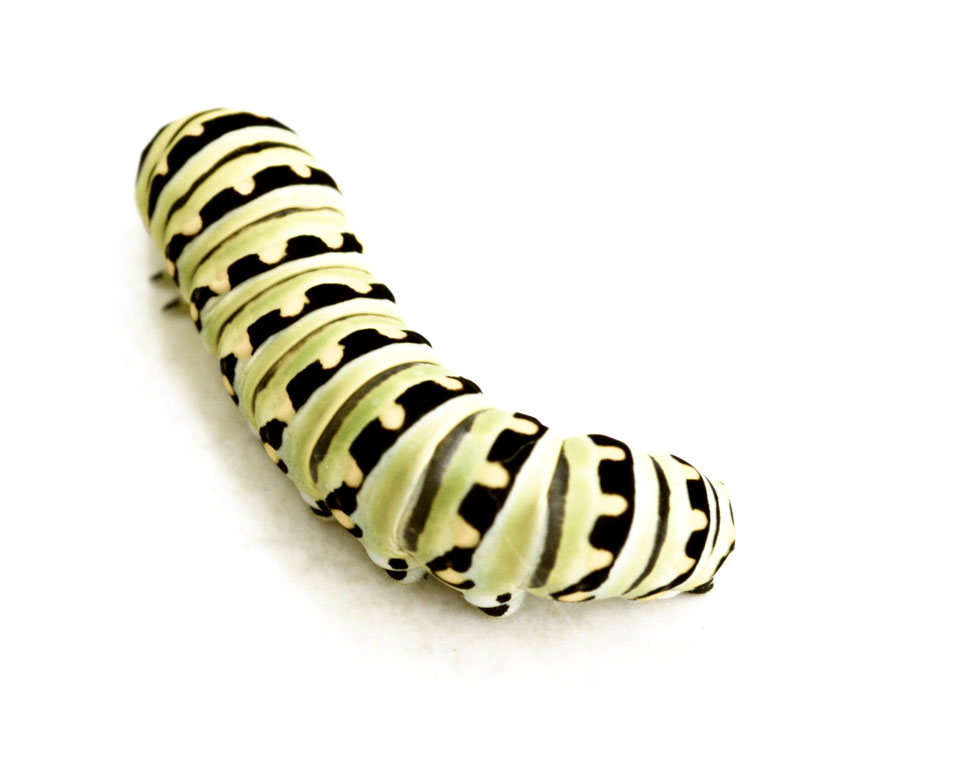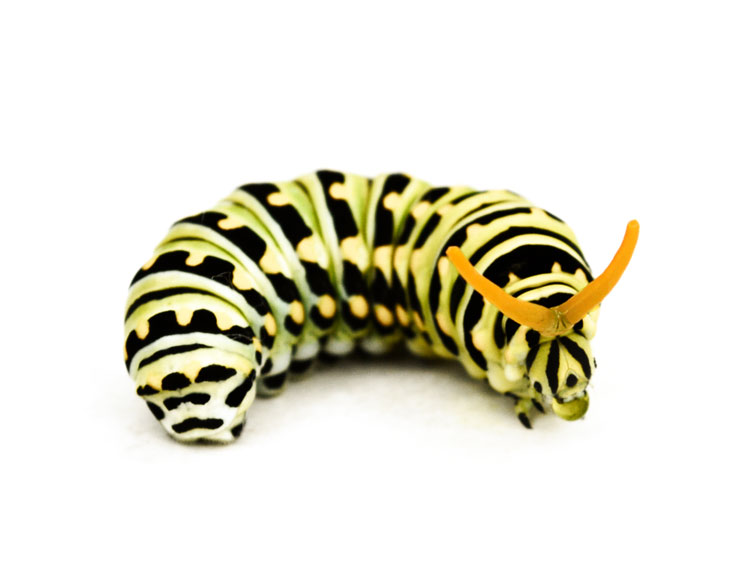Disclaimer: Though it would be far more glamorous to say I was out hiking knee-deep in native fauna with my hand-held magnifying glass, the reality was that I was taking out the garbage and recalled at the last minute my husband’s warning not to step in the parsley because we have caterpillars. So it is less of a nature walk than a stroll in my backyard. Point? HOW COOL IS THIS?
 © 2015 Catherine Jeltes
© 2015 Catherine JeltesThis is an eastern black swallowtail butterfly caterpillar in the stages just before getting ready to pupate (ie. make its chrysalis and change into a butterfly.) We grow a variety of low maintenance herbs in our garden, and both dill and parsley seem to invite these little guys quite nicely (which is why we allow these plants to generously re-seed ad nauseam.) Being a tomboy growing up, caterpillars and amphibians were my most favorite things. I still go a wee bit over-the-top when I encounter them. My son doesn’t quite understand my level of enthusiasm that he only reserves for “all games video.”
When I borrowed this little cutie for a photo op, he surprised me when I picked him up (or in fact touched him anywhere.)
 © 2015 Catherine Jeltes
© 2015 Catherine JeltesAs vibrantly orange as the “antennae” look, they unfortunately did not smell of mandarin or Sunkist. I suspect the accompanying scent fell within insect etiquette as the equivalent of a caterpillar fart. Here are the cool things I learned about our garden resident:
- The caterpillar larvae after hatching look markedly different from the late stage caterpillar I found. Newly hatched caterpillars camouflage to look like bird droppings. (Yes, you can accurately tell these newbie caterpillars that they indeed “look like sh*t.”)
- The orange “antennae”–actually a gland–are called osmeteria and have a chemical repellent (which obviously did not deter me, but does apparently deter predators such as ants.)
- Since some insect parasites that use swallowtail caterpillars as a host can locate them by smelling the caterpillar’s feces, swallowtail caterpillars use their mandibles to throw their own poop, thereby setting false trails for their predators.
- As for the swallowtail butterfly itself, if the wings are open you can tell the sex of the butterfly. A large dusty iridescent patch of blue on the hind wings = female; large bright areas of yellow spots = male (the blue patch is much smaller on males and less noticeable.)
It’s been a few days since I’ve seen our caterpillar. Hopefully he did not get munched. More than likely he has made his chrysalis and is quietly pupating. I am going to have to brave the current mosquito swarm and spend some more time inspecting the garden. Maybe–just maybe–I will find something fascinating enough to make the amount of hives I will undoubtedly acquire worth it. At the very least, perhaps I will find the cicada I retrieved that the cat caught and released in the house.